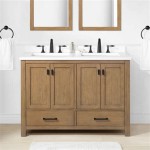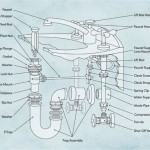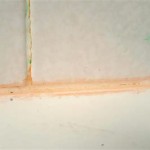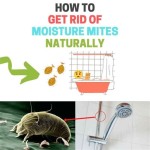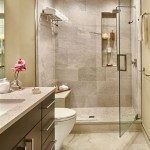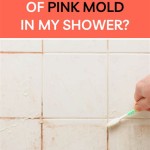How To Clean Limescale From Bathroom Taps And Faucets
Limescale, a chalky white deposit, commonly accumulates on bathroom taps and faucets in hard water areas. This unsightly buildup not only detracts from the appearance of fixtures but can also impede water flow and potentially damage components over time. Regular cleaning is essential to maintain both the aesthetics and functionality of bathroom fittings.
Several effective methods exist for removing limescale, ranging from natural remedies to commercial cleaning products. Choosing the right approach depends on the severity of the limescale buildup and the sensitivity of the tap's finish.
Vinegar: One of the most common and effective natural limescale removers is white vinegar. Its acidic nature helps dissolve the mineral deposits. To clean a tap with vinegar, soak a cloth or paper towel in the vinegar and wrap it around the affected area. Leave it in place for at least an hour, or even overnight for stubborn deposits. Afterward, remove the cloth and scrub the tap with a soft-bristled brush to dislodge any remaining limescale. Rinse thoroughly with water and buff dry with a clean cloth.
Lemon Juice: Similar to vinegar, lemon juice's acidity makes it effective against limescale. Cut a lemon in half and rub the cut side directly onto the limescale deposits. Allow the juice to sit for about an hour before scrubbing with a brush and rinsing clean. This method is particularly useful for cleaning smaller areas and removing light limescale buildup.
Baking Soda Paste: Baking soda offers a slightly abrasive cleaning action that can help lift limescale. Create a paste by mixing baking soda with a small amount of water. Apply the paste to the affected areas and let it sit for about an hour. Scrub gently with a soft brush or cloth and rinse thoroughly. Baking soda is a gentler option for delicate finishes.
Commercial Limescale Removers: A variety of commercial limescale removers are available in spray, liquid, and gel forms. These products are often formulated with stronger chemicals to tackle tough limescale deposits. Always follow the manufacturer's instructions carefully, as some products may not be suitable for all tap finishes. It is crucial to wear gloves and ensure adequate ventilation when using these products.
Preventing Limescale Buildup: While regular cleaning is necessary, preventative measures can significantly reduce the frequency and severity of limescale buildup. Wiping down taps and faucets with a dry cloth after each use can help prevent water spots and mineral deposits from forming. Installing a water softener can also reduce the hardness of the water supply, minimizing limescale accumulation throughout the bathroom.
Specific Faucet Types: Different faucet types may require slightly different cleaning approaches. For example, faucets with aerators can benefit from periodic removal and soaking in vinegar to remove limescale buildup within the aerator itself. Similarly, showerheads can be cleaned by filling a plastic bag with vinegar and securing it around the showerhead with a rubber band, allowing it to soak for several hours.
Protecting Tap Finishes: Exercise caution when cleaning taps with special finishes, such as brushed nickel or brass. Abrasive cleaners and scrubbing pads can scratch or damage these delicate surfaces. Opt for gentle cleaning methods and soft cloths to avoid marring the finish. Always test any cleaning solution on an inconspicuous area first to ensure compatibility.
Addressing Stubborn Limescale: For exceptionally stubborn limescale deposits that resist other methods, a specialized limescale removal tool may be necessary. These tools are typically designed to gently scrape away the limescale without scratching the surface. Care should be taken to avoid applying excessive pressure, which could damage the finish.
Regular Maintenance: Consistent cleaning is key to preventing limescale from becoming a major problem. Establishing a regular cleaning routine, even as simple as wiping down the taps daily, can significantly reduce the need for more intensive cleaning methods. This approach not only maintains the appearance of the fixtures but also prolongs their lifespan.
Understanding Water Hardness: The hardness of the water supply plays a significant role in the rate of limescale accumulation. Homes in hard water areas will experience more rapid limescale buildup. Knowing the water hardness level can help determine the appropriate cleaning frequency and the most effective cleaning methods.
Professional Cleaning Services: For particularly challenging limescale problems or for those who prefer to avoid DIY cleaning, professional cleaning services can provide effective solutions. These services often utilize specialized equipment and cleaning agents to achieve optimal results.

How To Remove Limescale From Your Taps Effectively Three Homemade Remedies Express Co

Removing And Preventing Limescale Benjamin Franklin Plumbing

3 Ways To Clean Limescale Off Taps Wikihow

Remove Limescale From Taps Bathroom Fittings Bond Cleaning In Adelaide

Limescale On Sink How To Remove Hard Water Deposits From Your Faucet Head Express Co

How To Remove Limescale From A Bathroom

How To Use Viakal For Removing Limescale

What Is Limescale How Do I Stop Get Rid Of It Taps Blog

How To Clean Limescale In Taps

How To Remove Hard Water Stains From The Bathroom Cleanipedia Ph


